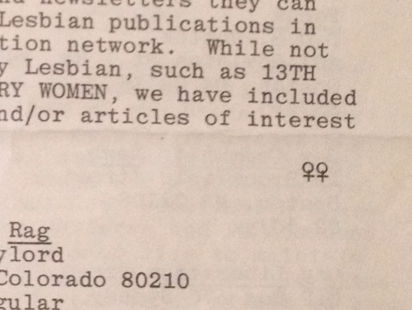An article I wrote about the Lesbian Herstory Archives‘ photo digitization project is now out in the Radical History Review’s second Queering Archives special issue. The article is called “Body, Sex, Interface: Reckoning with Images at the Lesbian Herstory Archives” (RHR 122, 2015).
Thanks to the special issue editors and
Here’s an excerpt from the article:
Digitization of this collection began in 2010, the first self-directed project to offer extensive online access to the archives. Preparing this collection for an online database involves several factors. I consider digitization at the LHA as an expansive process that is not conceptually limited to the creation of digital files from “analog” sources; to digitize also encompasses the design and implementation of an online user interface, the creation and assignment of descriptive metadata to images, and the selection of which images to offer online. The complexity of images of sexuality presents opportunities for reflecting on the cultural politics of this process, including the accessibility of sexual materials in lesbian, gay, bisexual, and transgender (LGBT) archives as they move online. An archive’s responsibility to provide access to images of sexuality is balanced with questions of legality, ethics, and propriety, creating a tension informed by the growing pressure of “queer liberalism” on these archives as they move further into public-facing roles mediated by the web.






